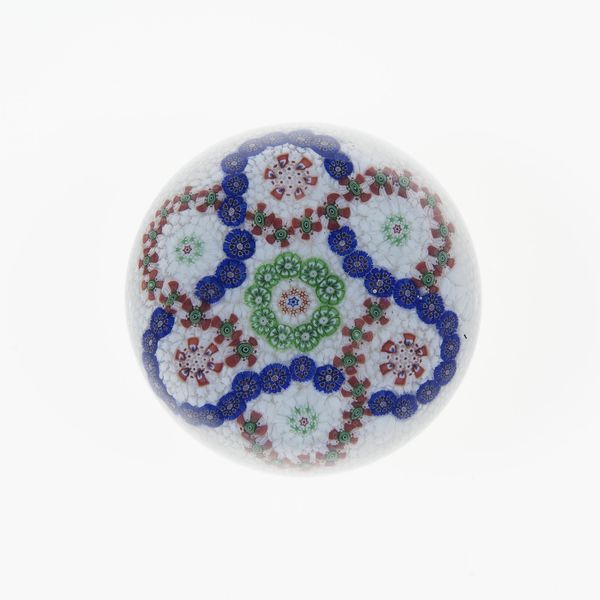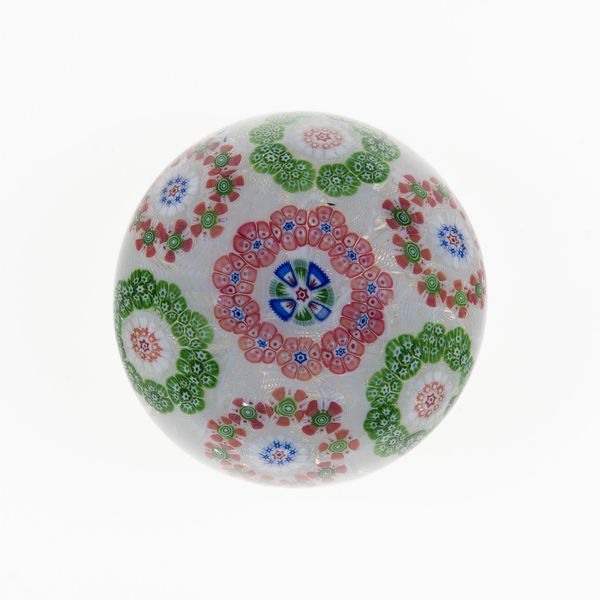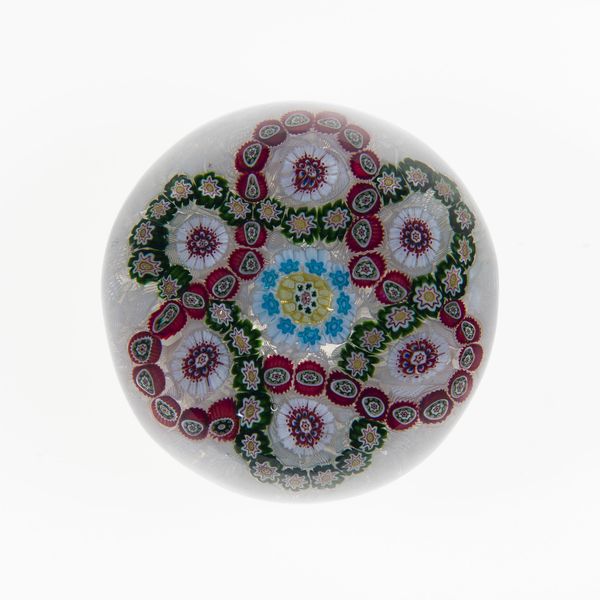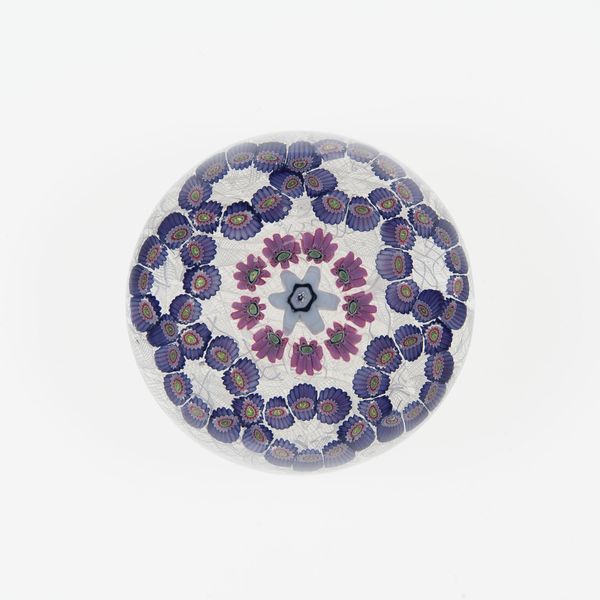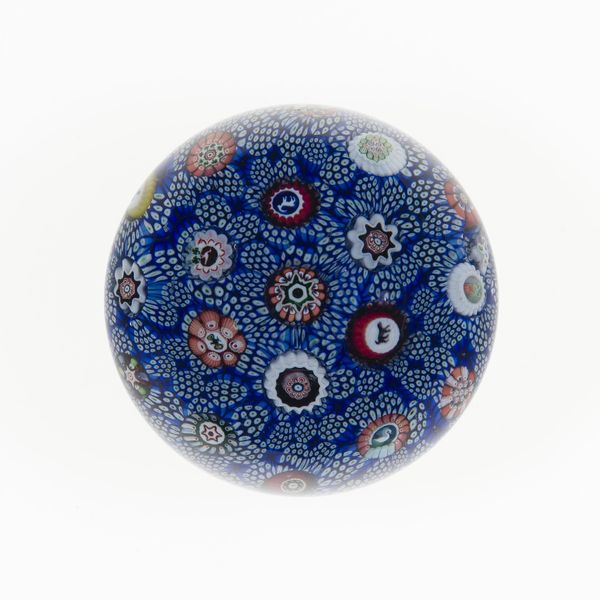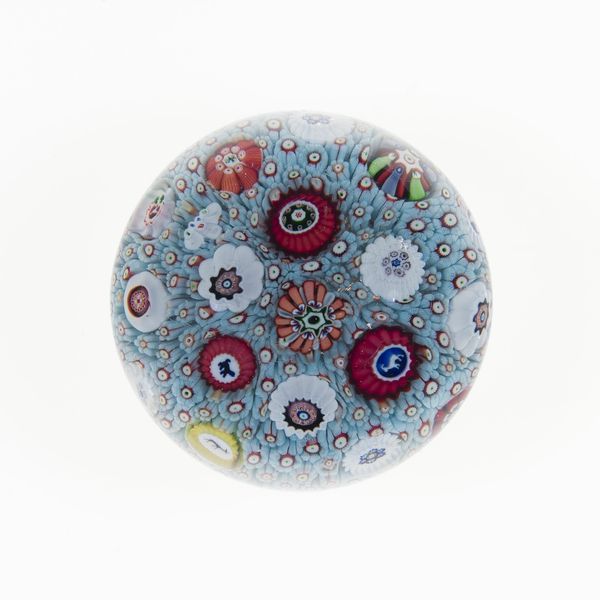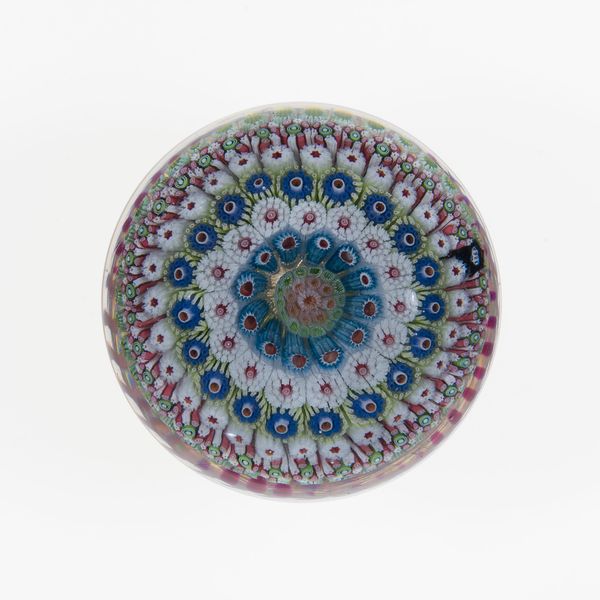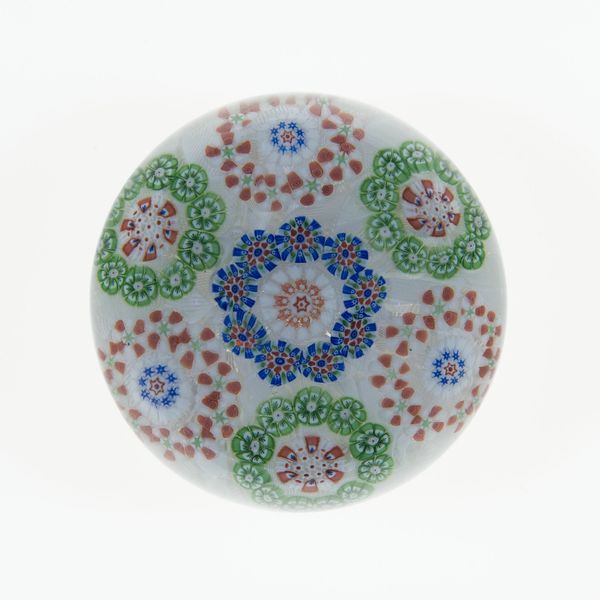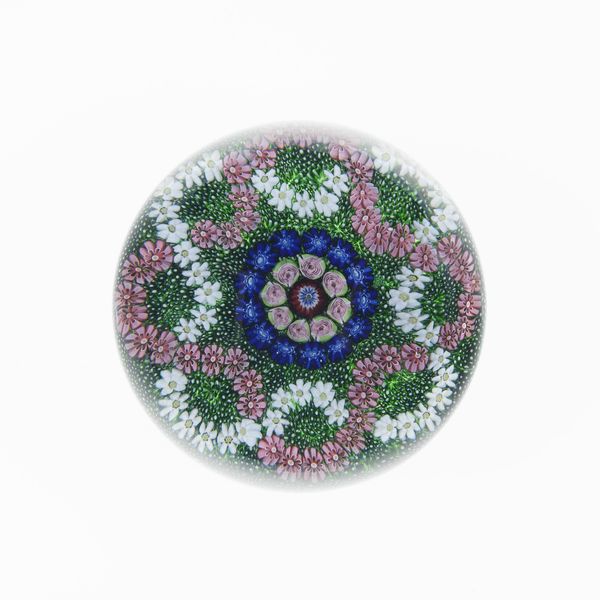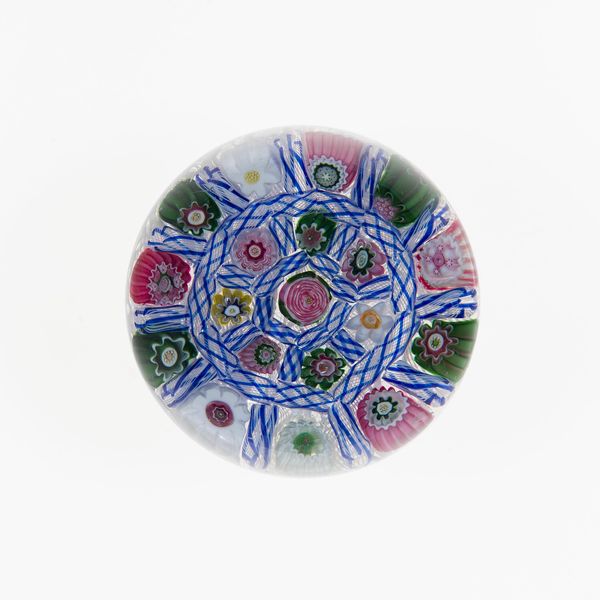
paper, glass
#
product photograph merchandise
#
natural stone pattern
#
circular oval feature
#
naturalistic pattern
#
round design
#
bright focal point
#
paper
#
pattern background
#
glass
#
geometric
#
flower pattern
#
france
#
round circular shape
#
decorative-art
#
concentric circle
Dimensions: Diam. 8.1 cm (3 3/16 in.)
Copyright: Public Domain
Curator: It's utterly enchanting, isn’t it? I'm particularly drawn to its mesmerizing kaleidoscope of delicate florets frozen in crystal time. Editor: Yes, that’s Clichy Glasshouse’s “Paperweight,” probably crafted sometime between 1845 and 1860. I see glass, but I wonder about the labor... Who exactly was meticulously arranging these tiny glass canes to make these complex designs? Curator: Exactly! Imagining their creation… the focus, the sheer artistry involved… it's like capturing fleeting moments of beauty, like pressed flowers from a dream. Each little flower is its own universe! Editor: Definitely pressed… and contained. You’ve got to wonder about glassmaking as an industry then, a growing, almost colonial network sourcing raw materials, employing a whole spectrum of skills to transform earth into these baubles for the rising middle class. Were these skilled artisans celebrated or just cogs? Curator: That tension between art and object… it adds such a layer. Do you find the concentric rings drawing you in, a journey to its heart? I almost feel it breathes. Editor: What breathes is consumerism. We tend to ignore the complex web behind a decorative art piece like this—the mining, the transportation, the specialized workshops each adding its component… It reflects France’s industrial aspirations as much as floral aesthetics. Curator: Maybe… but can't it be both? I think what speaks to me is how something so fragile, created from earthly materials, captures an almost eternal essence. Holding it, it’s as if you are cradling springtime. Editor: I’m seeing less springtime and more late-stage capitalism, with nature turned into capital. Still, these paperweights have definitely managed to capture and solidify an exquisite moment of material and labor history under a polished, transparent surface. Curator: That’s an interesting way to put it! Maybe seeing both is key—recognizing how deeply artistry can intersect with labor and larger industrial systems. Editor: I think I’ll always lean towards questioning the power dynamics baked into even the most beautiful objects. Hopefully that will allow us to come away with a deeper understanding of this time and our own.
Comments
No comments
Be the first to comment and join the conversation on the ultimate creative platform.
